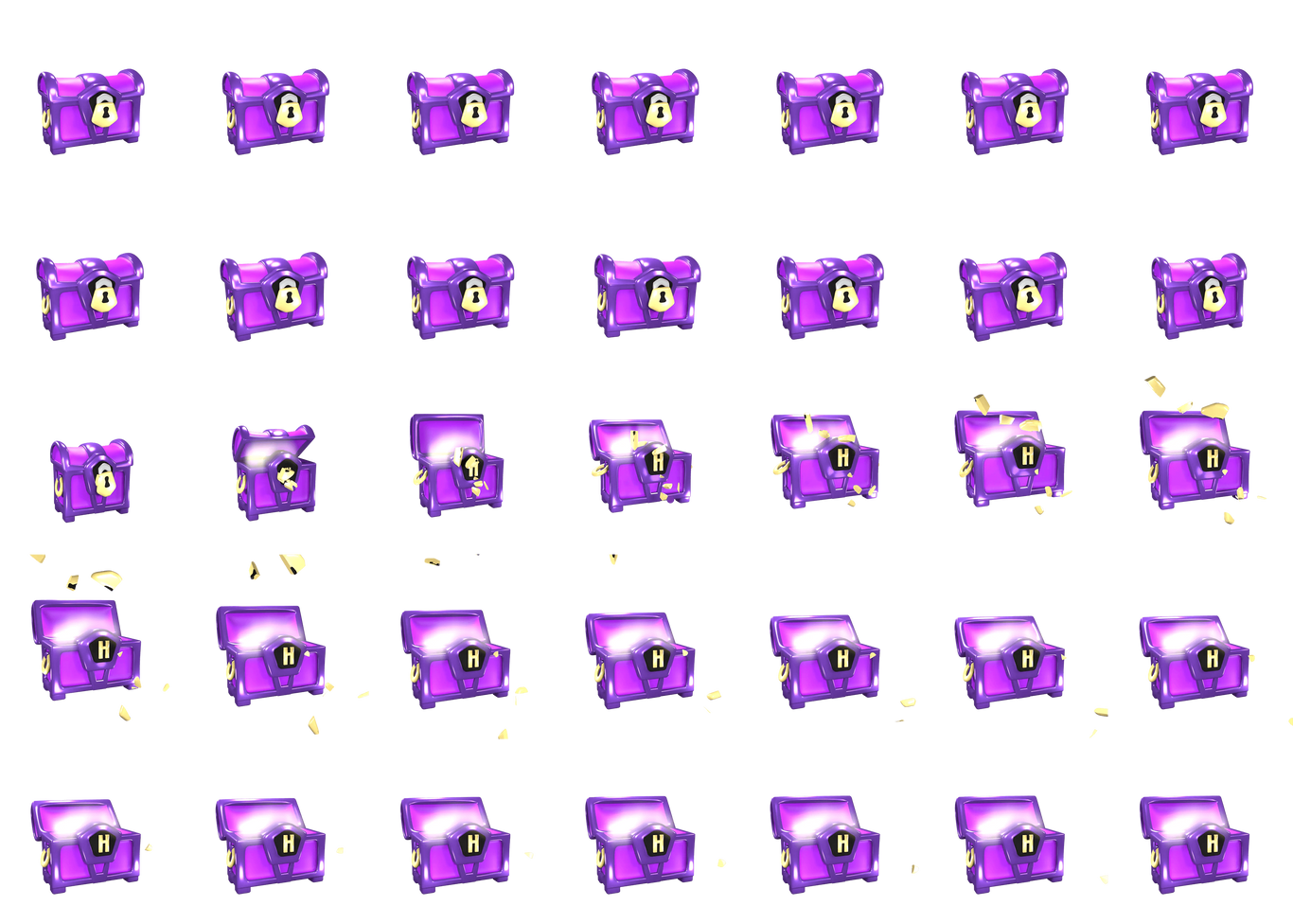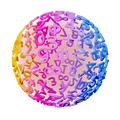9th Grade
How Do You Find the Sum of a Geometric Series?
{ "voice_prompt": "Read \"to the power\" correctly.", "manuscript": { "title": { "text": "How Do You Find the Sum of a Geometric Series?", "audio": "How do you find the sum of a geometric series?" }, "description": { "text": "There\u2019s a formula for finding the sum of a geometric series. You just need the first term, the ratio, and how many terms to add.", "audio": "There\u2019s a formula for finding the sum of a geometric series. You just need the first term, the ratio, and how many terms to add." }, "scenes": [ { "text": "Here\u2019s a geometric series: 3 plus 6 plus 12 plus 24 plus 48, and so on. Each term is multiplied by the same number to get the next.", "latex": "3 + 6 + 12 + 24 + 48 + \\cdots", "pop_animation_prompt": "Create pop animations for the following sequence as referenced: First, pop the number \"3\" (S1.3) and the operator \"plus\" (S1.+). Next, pop the number \"6\" (S1.6) and the operator \"plus\" (S1.+.3). Then, pop the number \"12\" (S1.12) and the operator \"plus\" (S1.+.4). Continue with the number \"24\" (S1.24) and the operator \"plus\" (S1.+.5). Finally, pop the number \"48\" (S1.48) and the operator \"and\" (S1.cdots). Ensure each element pops at the time it is referenced in the transcript." }, { "text": "Since the series is geometric, it has a constant multiplier, called the ratio. In this case, the ratio is 2 because each number is double the one before.", "latex": "\\text{Ratio} = 2", "pop_animation_prompt": "Create pop animations for the mathematical expression. First, pop the word \"Ratio\" when it is first mentioned. Then, pop the word \"Ratio\" again when it is mentioned the second time. Finally, pop the number \"2\" when it is referenced. Ensure each pop animation is synchronized with the corresponding reference in the transcript." }, { "text": "Now here\u2019s the real question: how can you find the sum of the first five terms without adding each one by hand?", "latex": "3 + 6 + 12 + 24 + 48", "pop_animation_prompt": "Create pop animations for the expression \"3 + 6 + 12 + 24 + 48\". As the transcript mentions \"the first five terms\", pop each number: \"3\", \"6\", \"12\", \"24\", and \"48\" simultaneously to emphasize the sequence of terms being summed." }, { "text": "There\u2019s a formula for that. You take the first term and multiply by one minus the ratio to the power of n, divided by one minus the ratio.", "latex": "S_n = a_1 \\times \\dfrac{1 - r^n}{1 - r}", "pop_animation_prompt": "Create pop animations for the following elements as they are referenced: First, pop the subscript expression \"a_1\" (S2.a1) and its components \"a\" (S2.a) and \"1\" (S2.1). Next, pop the multiplication operator \"\u00d7\" (S2.times). Then, pop the numerator \"1 - r^n\" (S2.1-rn) and its components \"1\" (S2.1.3), \"-\" (S2.-), and \"r^n\" (S2.rn). After that, pop the division operator \"/\" (S2.operator.3). Finally, pop the denominator \"1 - r\" (S2.1-r) and its components \"1\" (S2.1.4), \"-\" (S2.-.3), and \"r\" (S2.r.3)." }, { "text": "Now let\u2019s apply this to our series. The first term, a, one, is 3, the ratio r is 2, and we want the sum of the first 5 terms. That means n is 5. Plug those into the formula: S five equals 3 times one minus 2 to the fifth power, divided by one minus 2.", "latex": "S_5 = 3 \\times \\dfrac{1 - 2^5}{1 - 2}", "pop_animation_prompt": "Create pop animations for the following elements as they are referenced in the transcript: First, pop \"3\" (S4.3) for the first term. Next, pop \"2\" (S4.2) for the ratio. Then, pop \"5\" (S4.5) for the number of terms. Pop \"S_5\" (S4.s5) for the sum expression. Highlight \"3\" (S4.3) again, followed by the expression \"1 - 2^5\" (S4.1-25) and its components \"1\" (S4.1), \"-\" (S4.-), \"2\" (S4.2), and \"5\" (S4.5.3). Finally, pop the denominator \"1 - 2\" (S4.1-2) and its components \"1\" (S4.1.3), \"-\" (S4.-.3), and \"2\" (S4.2.3)." }, { "text": "Two to the fifth power is 32. So the numerator becomes one minus 32, which is negative 31. The denominator is one minus two, which is negative one. The negatives cancel out. 3 times 31 equals 93. This was much faster than adding each term by hand.", "latex": "3 \\times \\dfrac{1-32}{1-2} = 3 \\times \\dfrac{-31}{-1} = 3 \\times 31 = 93", "pop_animation_prompt": "Create pop animations for the following elements as they are referenced: First, pop the numerator , then pop the numbers and . Next, pop the result . Then, pop the denominator , followed by numbers and , and the result . Finally, pop numbers , , and the result ." }, { "text": "Let\u2019s try another one, but this time the numbers are getting smaller. The series is 16 plus 8 plus 4 plus 2 and so on.", "latex": "16 + 8 + 4 + 2 + \\cdots", "pop_animation_prompt": "Create pop animations for the mathematical expression \"16 + 8 + 4 + 2 + \\cdots\" as follows: First, pop the number \"16\" when it is mentioned. Next, pop the number \"8\" when it is referenced. Then, pop the number \"4\" when it is mentioned. Finally, pop the number \"2\" when it is referenced. Ensure each number pops individually as it is mentioned in the transcript." }, { "text": "Start by finding the ratio. Eight divided by sixteen is one half. Four divided by eight is also one half. Two divided by four is one half too. So the ratio is one half.", "latex": "\\dfrac{8}{16} = \\dfrac{1}{2} \\quad \\dfrac{4}{8} = \\dfrac{1}{2} \\quad \\dfrac{2}{4} = \\dfrac{1}{2}", "pop_animation_prompt": "Create pop animations for the following elements as they are referenced in the transcript: First, pop \"8\" (S7.8) and \"16\" (S7.16) together, followed by \"1/2\" (S7.dfrac12). Next, pop \"4\" (S7.4) and \"8\" (S7.8.3) together, then \"1/2\" (S7.dfrac12.3). Then, pop \"2\" (S7.2.4) and \"4\" (S7.4.3) together, followed by \"1/2\" (S7.dfrac12.4). Finally, pop all instances of \"1/2\" (S7.dfrac12, S7.dfrac12.3, S7.dfrac12.4) simultaneously." }, { "text": "Now suppose you want to find the sum of the first 4 terms. a, one is sixteen, the ratio is one half, and n is 4. So, S four equals sixteen times one minus one half to the fourth power, divided by one minus one half.", "latex": "S_4 = 16 \\times \\dfrac{1 - (\\tfrac{1}{2})^4}{1 - \\tfrac{1}{2}}", "pop_animation_prompt": "Create pop animations for the following elements as they are referenced: First, pop the number \"4\" (S8.4). Next, pop \"sixteen\" (S8.16) and \"one half\" (S8.tfrac12) simultaneously. Then, pop the number \"4\" (S8.4.4). After that, pop \"S\" (S8.s4). Next, pop \"sixteen\" (S8.16) again, followed by \"one minus one half to the power of four\" (S8.1-tfrac124). Finally, pop \"one minus one half\" (S8.1-tfrac12). Ensure each element pops at the precise moment it is mentioned in the transcript." }, { "text": "One half to the fourth power is one over sixteen. So now you have one minus one sixteenth in the numerator.", "latex": "S_4 = 16 \\times \\dfrac{1 - \\tfrac{1}{16}}{1 - \\tfrac{1}{2}}", "pop_animation_prompt": "Create pop animations for the following elements in sequence: First, pop the fraction \"one half\" . Next, pop the subscript expression \"four\" . Then, pop the fraction \"one over sixteen\" . Finally, pop the numerator \"one minus one sixteenth\" . Ensure each element pops at the time it is referenced in the transcript." }, { "text": "To subtract one sixteenth from one, you rewrite one as sixteen over sixteen. That gives sixteen minus one, which is fifteen over sixteen.", "latex": "1 - \\tfrac{1}{16} = \\tfrac{16}{16} - \\tfrac{1}{16} = \\tfrac{15}{16}", "pop_animation_prompt": "Create pop animations for the following math elements as they are referenced: First, pop the fraction \"1/16\" (S10.tfrac116) and the number \"1\" (S10.1) together. Next, pop the number \"1\" (S10.1) again, followed by the fraction \"16/16\" (S10.tfrac1616). Then, pop the number \"16\" (S10.16.3) and the numerator \"1\" (S10.1.3) simultaneously. Finally, pop the fraction \"15/16\" (S10.tfrac1516). Ensure each element pops at the time it is mentioned in the transcript." }, { "text": "The denominator is one minus one half, which is one half.", "latex": "16 \\times \\dfrac{\\tfrac{15}{16}}{1 - \\tfrac{1}{2}} = 16 \\times \\dfrac{\\tfrac{15}{16}}{ \\tfrac{1}{2}}", "pop_animation_prompt": "Create pop animations for the mathematical expression as follows: First, pop the denominator \"1 - \\tfrac{1}{2}\" (S11.1-tfrac12). Then, sequentially pop the elements within it: the number \"1\" (S11.1.5), the operator \"-\" (S11.-), and the fraction \"\\tfrac{1}{2}\" (S11.tfrac12). Finally, pop the fraction \"\\tfrac{1}{2}\" (S11.tfrac12) again to emphasize its equivalence to \"one half.\"" }, { "text": "Dividing by one half is the same as multiplying by two. So now you get sixteen times fifteen over sixteen times two.", "latex": "16 \\times \\dfrac{15}{16} \\times 2", "pop_animation_prompt": "Create pop animations for the following elements as they are referenced: First, pop the number \"2\" (S12.2). Next, pop \"16\" (S12.16), followed by the operator \"times\" (S12.times). Then, pop the fraction \"15/16\" (S12.dfrac1516). After that, pop the operator \"times\" (S12.times.3), and finally, pop the number \"2\" (S12.2) again. Ensure each element pops at the exact moment it is mentioned in the transcript." }, { "text": "The sixteens cancel out, so you\u2019re left with fifteen times two. That\u2019s thirty. So the sum of the first 4 terms is 30.", "latex": "S_4 = 30", "pop_animation_prompt": "Create pop animations for the mathematical expression. First, pop the number \"30\" when it is mentioned as \"thirty\". Next, pop the subscript expression \"S_4\" when referred to as \"the sum of the first 4 terms\". Finally, pop the number \"30\" again when it is reiterated as \"30\". Ensure each pop aligns with the corresponding reference in the transcript." } ], "outro": { "text": "There\u2019s a formula for finding the sum of the first n terms in a geometric series. You just need the first term, the ratio, and how many terms to add.", "audio": "There\u2019s a formula for finding the sum of the first n terms in a geometric series. You just need the first term, the ratio, and how many terms to add." } } }





















